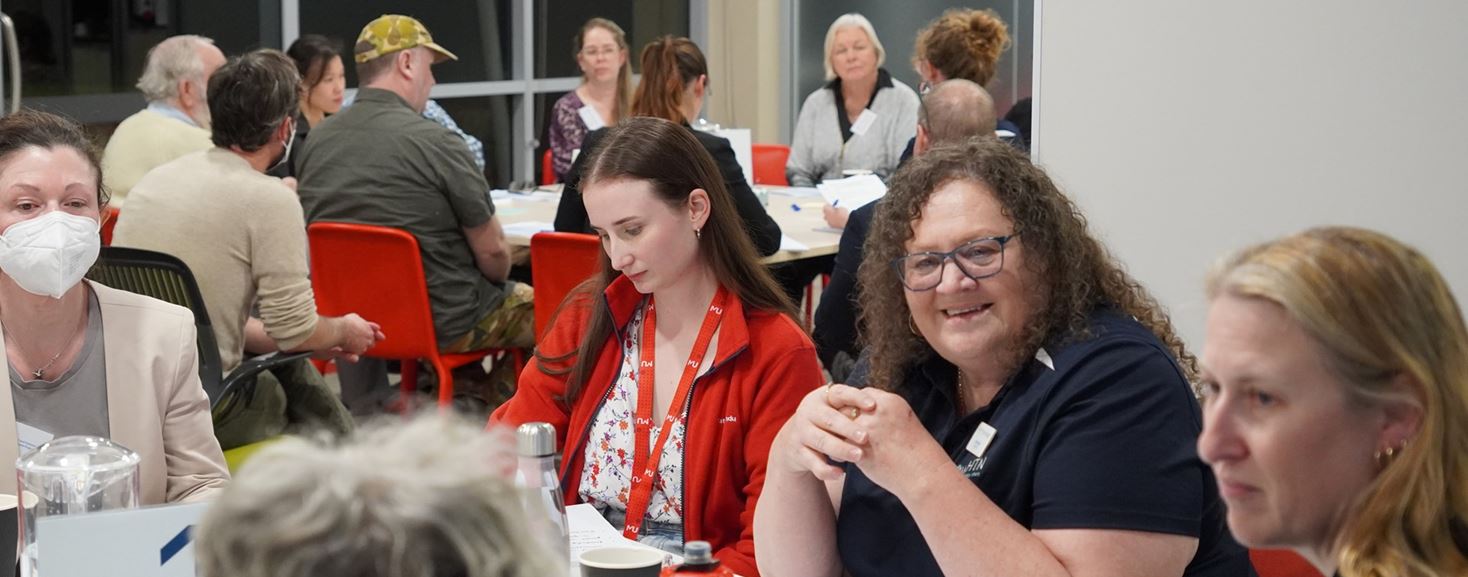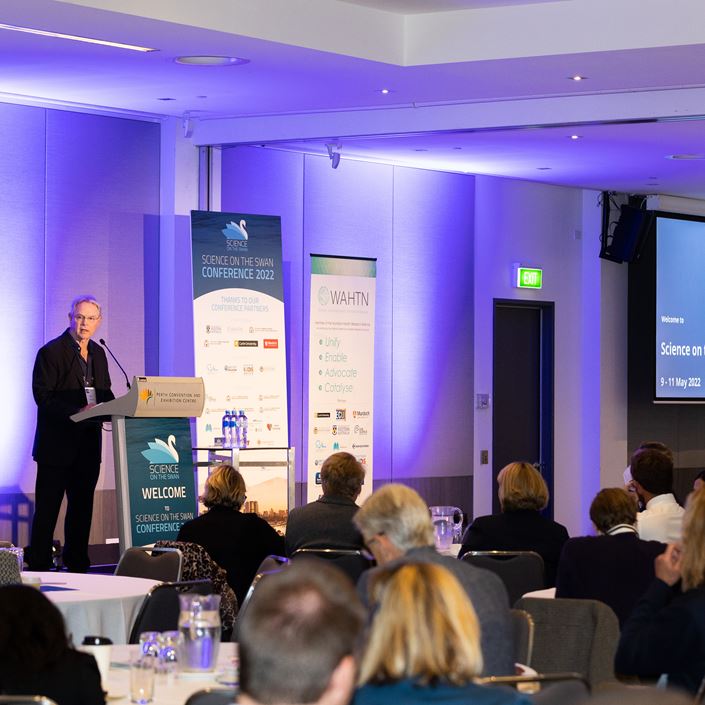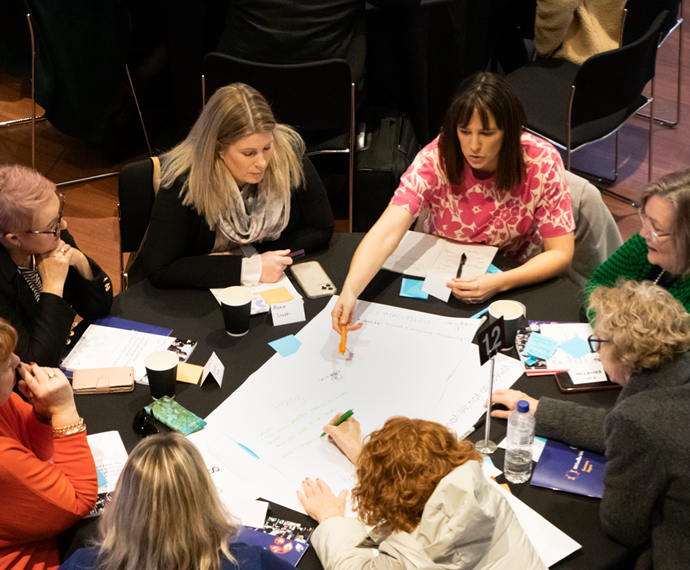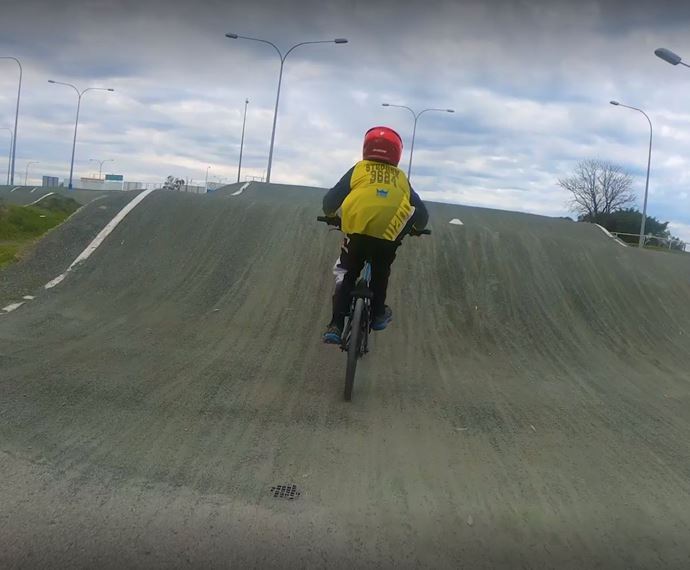WA Health Translation Network
Lotterywest supported the Western Australian Health Translation Network in its founding stages to become a Research Translation Centre recognised by the National Health and Medical Research Council.
The project aimed to position Western Australia (WA) to have better access to world class researchers, increased investment, and, most importantly, optimal translation of research findings to health consumers.
Towards costs to support connection of health and medical clinicians, researchers and the WA community to innovate better health outcomes.
University of Western Australia
1/1/2016
$10,525,000
Lotterywest
$3,200,000
State-wide
General community
- The Western Australian Health Translation Network (WAHTN) worked with partner organisations and the Government to bring together funding sources to attract world class personnel with the right expertise to build the Australian National Phenome Centre (ANPC) in Western Australia.
- The ANPC has contributed to the understanding of the biggest health challenges of our time.
- Consumer and community involvement in research through a 'hub and spoke' model is recognised as best practice on a state, national and international level.
- The Consumer and Community Involvement Program is now an embedded part of WAHTN operations.
- The role, value and process of consumer and community involvement in research is more broadly known.
- Working with Partners since program inception saw a significant increase in the number and capacity of researchers working with people with lived experience.
- WAHTN used their learning and experience to support other Universities and Institutes to create and tailor their own programs.
- Supporting collaborative partnerships led to the creation of a world leading facility.
- Becoming a nationally accredited Research Translation Centre fostered greater levels of collaboration and co-operation amongst researchers, clinicians, funders and consumer.
- A ‘Team WA” approach allowed WAHTN to enable and facilitate large state-wide initiatives and platforms supporting health research and improving policy and practice.
- Ongoing involvement of consumer and community in all stages of research requires a commitment of resources that some Partners don’t have readily available.
- Early career researchers may have limited budgets which can limit the ability to involve people with lived experience in research.
- Finding sustainable funding for state-wide infrastructure and platforms which support health research remains challenging.

Opportunity
Australia is a world leader in health and medical research; however, challenges still exist in moving new ideas through the research pipeline. These challenges can adversely impact ideas becoming new products that contribute to positive health outcomes for Australians. [1]
“The translation of health and medical research provides the best opportunity for populations to receive excellent health care and drive advances and breakthroughs in health care in Australia.”
[2]
In the research translation process, research ideas are moved from labs to clinics. The research pipeline ensures medical discoveries become part of the clinical practice of GPs, specialists, and hospitals [1].
National Health and Medical Research Council accreditation as a Research Translation Centre (RTC) has a multitude of benefits. It recognises leadership and excellence in research, translation, collaboration, and the training of health professionals in an evidence-based environment [1]. Accreditation creates opportunities to access streams of research funding available exclusively to accredited centres through the Commonwealth Medical Research Future Fund (MRFF), and brings profile for recruitment of faculty and trainees. It also enhances opportunities for local, national and international funding, support and collaboration.
Increasingly, governments, funding bodies and research organisations are recognising the importance of including ‘lived experiences’, values and priorities of consumers and community members into research policies and practice. Consequently, consumer involvement embedded throughout the research process is now a key requirement of applications being submitted to the National Health and Medical Research Council (NHMRC), MRFF and other major funding bodies.
Approach
In 2016, the University of Western Australia received $3.2 million in Lotterywest grant funding towards project and equipment costs associated with the implementation, over three years, of the WA Health Translation Network (WAHTN). WAHTN is a partnership of 23 organisations and eight associate organisations across key research sectors; it includes WA Universities, major research institutes, hospitals, the State Government and community health organisations. The University of Western Australia acts as the ‘Centre Agent’ on behalf of the WAHTN partner organisations.
The establishment of WAHTN strengthened connectedness between research, researchers and the community, and provided a platform to attract significant additional investment.
The grant supported two main initiatives over the grant period: the Australian National Phenome Centre (ANPC) and WAHTN’s Consumer & Community Involvement Program (formerly the Consumer & Community Health Research Network).
The grant helped WAHTN foster collaborative and strategic partnerships, developing the highly regarded annual Science on the Swan Conference. It also provided a visiting professor lecture and workshop series, and facilitated interest groups, platforms and training programs in support of WA’s health consumers and the broader health and medical research sector.
Australian National Phenome Centre
The ANPC was created to enhance large-scale metabolic phenotyping research in Australia and allows Australian scientists to be part of the global research effort working to transform health and improve disease prevention, detection and treatment.
Through this grant, WAHTN contributed to the procurement of a Mass Spectrometer for the ANPC, making their collection of Mass Spectrometers the largest in the Southern Hemisphere. When combined with nuclear magnetic resonance spectroscopy and advanced data modelling, mass spectrometers can identify the unique metabolic ‘signature’ of individuals and communities.
Consumer & Community Involvement Program
Over the three years of the grant funding, the Consumer & Community Involvement Program (CCIProgram) saw the expansion of a program initially established with two organisations - The University of Western Australia’s School of Population and Global Health and Telethon Kids Institute - to being available to support WAHTN’s 23 partner organisations and the broader health research community.
The CCIProgram’s international best practice model for the three years of the grant included:
- A Delivery Team of Consumer and Community Coordinators (CCI coordinators) who provided on-the-ground support to several partner organisations.
- A Development Team which provided ‘back-of-house’ support to the CCI coordinators as well as the development of resources, training and events for WAHTN partners and the broader community.



Impacts and outcomes
Australian National Phenome Centre
The ANPC is an international research centre, developing and delivering services that benefit the global population. The WAHTN worked with partner organisations, the WA State Government and the Australian Research Council to bring together multiple funding sources to attract world class personnel with the right expertise to build the ANPC in WA.
The ANPC is Australia’s first phenome hub and has significantly contributed to the understanding of the biggest health challenges of our time – including cancer, diabetes, obesity and dementia – providing a roadmap for people to live longer, healthier lives. The ANPC illustrates the ability of WAHTN to promote collaboration across partners and capacity to recruit internationally distinguished researchers across partner organisations.
The ANPC is affiliated with the International Phenome Centre Network and shares an interest in building a global infrastructure around harmonised research information, data, methods, and technologies. By standardising techniques, the findings and subsequent benefits can be shared worldwide.
Consumer & Community Involvement Program
CCI coordinators based with partner organisations as the ‘face’ of consumer and community involvement in research in a ‘hub and spoke’ model, is seen as an important element of research success. This model is recognised as ‘best practice’ by partners and institutions on a state, national, and international level.
Following on from the initial three year grant, WAHTN received an additional 12-months funding from Lotterywest for the CCIProgram to transition to a more sustainable model. The CCIProgram continued to have conversations with WAHTN partners and other organisations about ways to support consumer and community involvement in research. These partnerships also made visible to others in the health sector the benefits of consumer and community involvement in research and ways in which organisations can build CCI capacity.
The CCIProgram is now an embedded part of WAHTN core operations, having successfully transitioned to a model where participating WAHTN members fund their CCI coordinators.
“WAHTN believes consumers have an inherent right to be involved in health and medical research and should be encouraged, supported and given opportunities to do so.”
Professor Gary Geelhoed, Executive Director, WAHTN
What worked
Investment in consumer and community involvement increases capacity and knowledge.
Through the CCIProgram, there has been an increased awareness of the role, value and process of consumer and community involvement in research to improve the quality and impact of how research translates into responsive and relevant outcomes for all parts of the WA community.
This has led to ongoing growth in both the number and capacity of organisations and researchers involving people with a lived experience in research. Program members grew to nearly 4,000 members by 2019, and 7,000 by early 2023.
With learning and experienced gained, WAHTN has supported Universities and Institutes to create and tailor their own consumer involvement platforms and programs.
Intentional and collaborative partnerships lead to world class facilities
This grant supported the collaboration of partnerships which led to the creation of the Australian National Phenome Centre. Today this world leading facility continues to collaborate across Australian and international health and research sectors to support almost every area of bioscience. It also provides a new platform for research across the full spectrum of health, food and the environment, in solving some of the world’s most challenging problems.
National accreditation fosters further collaboration, co-operation and opportunities
This grant helped establish the WAHTN as a NHMRC accredited Research Translation Centre that supports the entire WA health and medical sector. The breadth and depth of the partnerships means WAHTN can foster greater levels of collaboration and co-operation between researchers, clinicians, funders and consumers. This non-partisan ‘Team WA’ approach allows WAHTN to enable and facilitate large state-wide initiatives and platforms which support health research and accelerate its translation into improved policy and practice.
Key challenges
Ongoing investment and community involvement requires resources.
It took resources to encourage ongoing investment by universities, research institutes, health services, government, funders and other research-focussed organisations to make CCI ‘visible’ as an essential element of research.
To continue to embed CCI into policy and governance of Research Strategies and Implementation Plans, a growing commitment and resource allocation to the involvement of people with a lived experience is required from partners. This may require partner organisations to secure additional funding or re-prioritise current funding.
One solution already identified by WAHTN to resolve these barriers, is facilitating the development of ‘Involvement Banks’. These Banks will provide a source of funds to enable early career researchers with limited budgets the ability to involve people with a lived experience in research prioritisation, research co-design and translation of research into relevant and responsive benefits to community.
Finding sustainable funding for state-wide infrastructure and platforms which support health research remains challenging.
WAHTN has been successful in bringing the sector together to work on large scale initiatives and creating education and support platforms such as the WAHTN CCIProgram and Research Education and Training Platform. Finding ongoing sources of funding for these, and other sector wide research infrastructure remains a challenge, especially as theses initiatives don’t fit into project based competitive grant schemes.
REFERENCES
- Department of Health and Aged Care. Department of Health and Aged Care. 2022 [cited 2023 January 23]; Available from: https://www.health.gov.au/our-work/medical-research-future-fund/mrff-research-themes/research-translation
- National Health and Medical Research Council. National Health and Medical Research. 2021 [cited 2023 23 January] Available from: https://www.nhmrc.gov.au/research-policy/research-translation/recognised-research-translation-centres
Learn about wellbeing
Understand how your community is going to help you to better target and plan your project.
Ready to plan your project?
Understand your vision, plan your impact and report on the outcomes of your project with three easy interactive tools in the Community Impact Planner.
Acknowledgement of Country
The Western Australian Community Impact Hub acknowledges and pays respect to the Traditional Owners of the land on which we are based, the Whadjuk people of the Noongar Nation and extends that respect to all the Traditional Owners and Elders of this country. We recognise the significant importance of their cultural heritage, values and beliefs and how these contribute to the positive health and wellbeing of the whole community.


